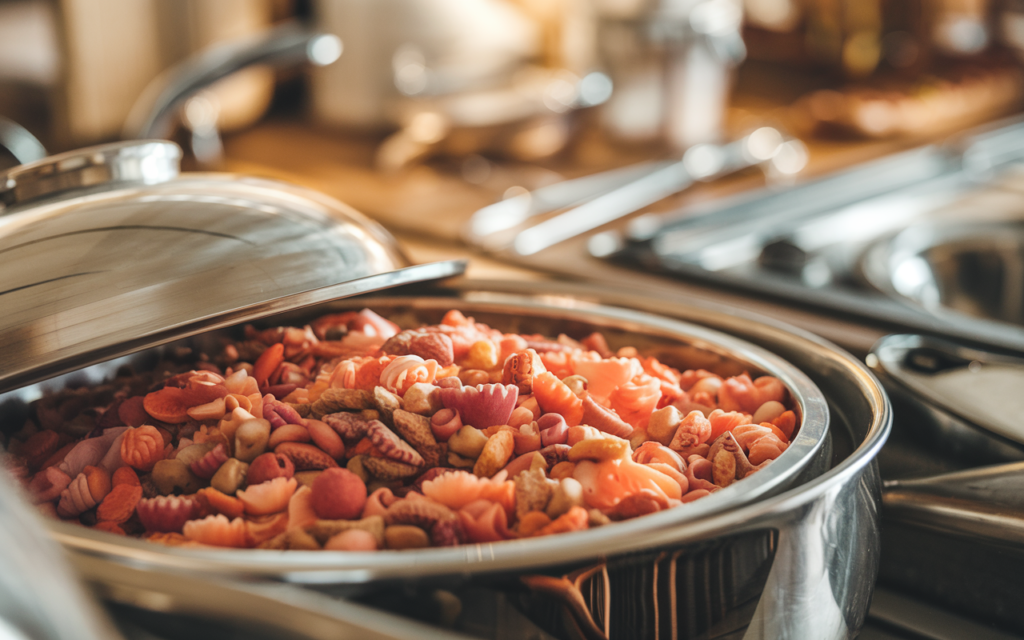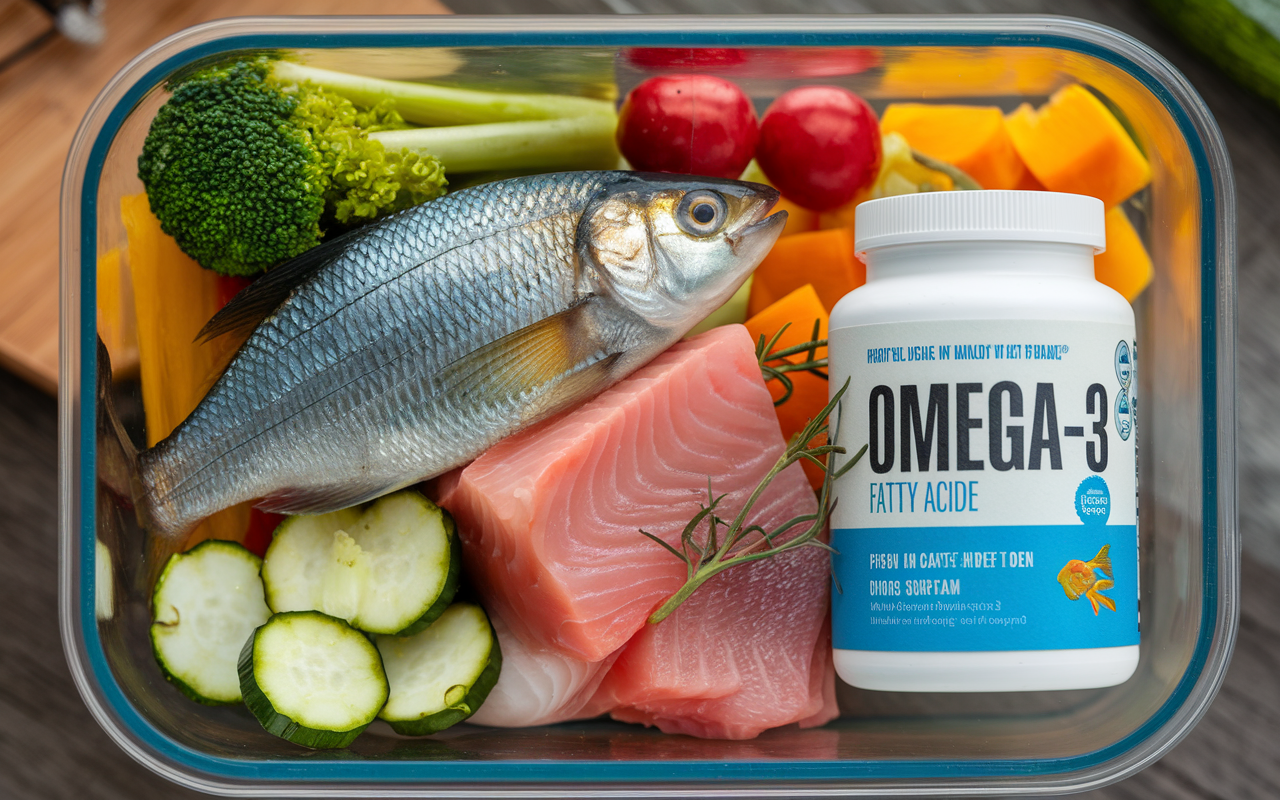Fish Food Recipe: Healthy Homemade Recipes for All Types of Fish
When it comes to the health and well-being of your fish, the fish food recipe you choose plays a crucial role. Homemade fish food is a great option for providing your aquatic friends with fresh, nutritious meals tailored to their specific dietary needs. Whether you have carnivorous, herbivorous, or omnivorous fish, creating your own fish food recipes ensures they receive the highest-quality ingredients. In this guide, we will cover everything you need to know to prepare the best homemade fish food for your pets.
Why Homemade Fish Food?
Benefits of Homemade Fish Food
Making your own fish food comes with several benefits that can improve the health of your fish and potentially save you money. Let’s explore some of the key advantages of preparing homemade fish food:
- Better Control Over Ingredients: When you prepare your own fish food, you have complete control over the ingredients. You can choose only the best, fresh, and organic items, avoiding fillers, preservatives, and artificial coloring commonly found in commercial fish food.
- Cost-Effective: While it may seem like buying fish food is cheaper, making your own food can actually save you money in the long run. Many of the ingredients used in homemade fish food (like fish fillets, vegetables, and gelatin) are inexpensive and readily available.
- Customizable Recipes: Different species of fish have unique dietary needs. Homemade recipes allow you to tailor the food to your fish’s specific requirements. Whether they are carnivorous, herbivorous, or omnivorous, you can make a blend that fits their natural diet.
- Freshness: Homemade fish food is fresher than store-bought options, which may have been sitting on the shelf for months. Fresh food retains more of its nutritional value.
- No Artificial Preservatives: Many commercially available fish foods contain artificial preservatives and stabilizers that can affect your fish’s health over time. By making your own food, you eliminate this concern entirely.
What Is the Best Homemade Food for Fish?
To create the best homemade fish food, you need to consider the dietary needs of the fish species you’re feeding. Fish can generally be classified into three categories based on their diet:
- Carnivorous Fish: These fish primarily eat meat, such as smaller fish, shrimp, and worms.
- Herbivorous Fish: Herbivorous fish thrive on plants, algae, and other plant-based foods.
- Omnivorous Fish: These fish eat a combination of both plant and animal-based foods.
Ingredients for Herbivorous Fish:
Herbivorous fish require a diet rich in plant-based foods, including greens, vegetables, and fruits. Here are some ideal ingredients for herbivorous fish:
- Leafy Greens: Spinach, kale, lettuce, and dandelion greens are packed with essential nutrients.
- Vegetables: Zucchini, peas, carrots, cucumbers, and sweet potatoes provide a great source of fiber and vitamins.
- Seaweed: Nori and spirulina are excellent sources of essential minerals and nutrients.
- Fruits: Some herbivores enjoy fruits like apples, pears, and bananas, though these should be fed in moderation to avoid excess sugars.
Ingredients for Carnivorous Fish:
Carnivorous fish need high-quality protein to thrive. Their diet should include fresh fish, shellfish, and other animal-based ingredients:
- Fish Fillets: Fish like tilapia, cod, salmon, and trout are perfect for carnivores.
- Shrimp: Shrimp is an excellent protein source and is often a favorite of many carnivorous fish.
- Squid or Shellfish: Squid, clams, and mussels are excellent protein-rich options for carnivorous fish.
- Eggs: Eggs are an easy and excellent source of protein and omega-3 fatty acids.
Ingredients for Omnivorous Fish:
Omnivorous fish require a balance of both plant-based and animal-based ingredients. Here are some ideal ingredients for omnivores:
- Fish Fillets: Lean fish like tilapia or cod provide the necessary protein.
- Vegetables: Incorporate greens, peas, carrots, and zucchini into their diet.
- Fruit: Fruits like apples and bananas can be fed in moderation.
- Gelatin: Gelatin helps bind the ingredients together, making it easier to prepare and feed to your fish.
By combining these ingredients, you can create a well-balanced fish food recipe that will provide all the essential nutrients your fish need to thrive.
How to Make Homemade Fish Feed?
Now that you know the essential ingredients for your fish, let’s dive into the step-by-step process of creating homemade fish food. It’s easier than you might think, and once you’ve made your first batch, you’ll likely want to experiment with different recipes.
Step-by-Step Recipe for Homemade Fish Food
Here’s a simple and nutritious recipe for homemade fish food that works well for both carnivorous and omnivorous fish. Feel free to adjust the ingredients based on the dietary preferences of your fish.
Ingredients:
- 1 cup of fresh fish fillet (e.g., tilapia or salmon)
- 1/2 cup of vegetables (spinach, peas, or carrots)
- 1 tablespoon of spirulina powder (or seaweed)
- 1 tablespoon of gelatin powder
- 1/4 cup of fish oil (for omega-3 fatty acids)
- 1/4 cup of water
Instructions:
- Prepare the Ingredients: Begin by finely chopping the fish fillet and vegetables. If you have a food processor or blender, you can use that to blend them into a fine paste.
- Dissolve the Gelatin: In a small bowl, dissolve the gelatin powder in hot water. Stir until fully dissolved.
- Blend the Fish Paste: Mix the chopped fish, vegetables, and spirulina powder in a large bowl. If using a food processor, blend everything together until it forms a smooth paste.
- Add Fish Oil and Gelatin: Pour the dissolved gelatin and fish oil into the mixture. The gelatin helps bind everything together, making it easier to handle and feed.
- Shape the Mixture: Use your hands or a spoon to form the mixture into small balls, patties, or cubes. Alternatively, you can pour the mixture into ice cube trays for easy portion control.
- Freeze the Fish Food: Place the shaped fish food into the freezer. Allow it to freeze for at least 3 hours or until solid. You can then store the frozen fish food in airtight containers.
This recipe provides a nutritious blend of protein, vegetables, and healthy fats, making it an excellent choice for your fish. You can adjust the ingredients based on your fish’s specific needs.
How to Make High-Quality Fish Food?
High-quality fish food should be nutritionally balanced to ensure your fish receive the proper nutrients they need to stay healthy. To make high-quality fish food at home, keep the following tips in mind:
Key Elements for High-Quality Fish Food:
- Protein: Fish require a good amount of protein for muscle growth and overall health. Use high-quality fish fillets, shrimp, or shellfish to provide the protein your fish need.
- Fatty Acids: Omega-3 and omega-6 fatty acids are essential for your fish’s skin health, growth, and immune function. Fish oil, flaxseed oil, and spirulina are excellent sources of these fatty acids.
- Fiber: Fiber is important for digestion and gut health. Include fiber-rich vegetables like peas, spinach, and zucchini in your fish food recipes.
- Vitamins and Minerals: Fish need vitamins and minerals to support their immune system and overall health. Using a variety of vegetables, fruits, and seaweed can ensure they receive these essential nutrients.
Additives for Boosting Quality:
- Spirulina: This blue-green algae is a superfood packed with nutrients. It’s an excellent addition to homemade fish food, especially for herbivorous fish.
- Garlic: Garlic is a natural antimicrobial and helps boost the immune system. You can add small amounts of garlic to your fish food for extra health benefits.
- Chlorella: Like spirulina, chlorella is another type of algae that is rich in vitamins, minerals, and amino acids.
By incorporating these elements into your homemade fish food recipes, you ensure that your fish receive all the essential nutrients they need for optimal health.
What Is the Best Food to Feed My Fish?
Feeding your fish the right food is essential for their growth, health, and longevity. The best food for your fish depends on their species, size, and dietary habits. Here are some guidelines for feeding your fish:
Guidelines for Feeding Fish:
- Carnivorous Fish: These fish thrive on a diet rich in protein. Feed them foods like fish fillets, shrimp, and other animal-based ingredients.
- Herbivorous Fish: Herbivorous fish do best when fed leafy greens, vegetables, and seaweed.
- Omnivorous Fish: These fish require a balance of both animal protein and plant-based foods. A combination of fish fillets, vegetables, and fruits will provide a well-rounded diet.
- Baby Fish (Fry): Baby fish have special dietary needs. They require finely ground fish food or specially formulated fry food to promote healthy growth.
Feeding Tips:
- Avoid Overfeeding: Overfeeding can lead to water quality problems and health issues for your fish. Feed small portions, and remove any uneaten food after a few hours.
- Variety is Key: Offering a variety of foods will ensure your fish get all the nutrients they need. Rotate between different ingredients and recipes to provide a well-balanced diet.
- Monitor Your Fish’s Health: Keep an eye on your fish’s behavior, appearance, and growth. If they seem lethargic or develop unusual symptoms, it could be a sign that their diet needs adjustment.

Best Ingredients for Homemade Fish Food
Creating the best homemade fish food recipe starts with selecting the right ingredients. The quality of ingredients directly impacts the nutritional value and overall health benefits for your fish. Let’s explore some of the best ingredients for both herbivorous and carnivorous fish.
- Protein Sources: Fresh fish, shrimp, and squid are excellent sources of protein for carnivorous fish. You can learn more about different types of protein for fish diets in our article on high-protein foods for fish.
- Vegetables: For herbivores, vegetables like spinach, zucchini, and peas provide essential vitamins and minerals. We discuss the best plant-based diets for fish in our plant-based nutrition guide.
- Omega-3 Fatty Acids: Fish oil and spirulina are great for providing omega-3s, which are vital for the health of your fish. Learn how to incorporate omega-3s into your fish’s diet by reading our article on omega-3 fatty acids for fish health.
How to Store Homemade Fish Food
Storing homemade fish food properly ensures it remains fresh and safe for your fish. After preparing your fish food, it’s important to store it in a way that preserves its nutritional value and prevents spoilage. Here are some tips for proper storage:
- Freezing: Freezing homemade fish food in small portions is an effective way to preserve it for long periods. For tips on freezing and thawing fish food, check out our article on how to store homemade fish food.
- Airtight Containers: Always store your homemade fish food in airtight containers to prevent contamination. This will keep your food fresh longer and protect it from freezer burn. For more storage tips, see our post on storage techniques for fish food.
- Shelf Life: Learn how long different types of homemade fish food can be stored in our fish food shelf life guide.
Common Mistakes to Avoid When Making Homemade Fish Food
While making your own fish food recipes is rewarding, there are a few common mistakes you should avoid to ensure your fish stay healthy and safe. Here are some mistakes to watch out for:
- Using the Wrong Ingredients: Not all foods are suitable for fish. Avoid using ingredients that may be toxic to them. For example, avoid feeding fish processed meats or sugary foods. For a complete list of safe and unsafe foods, refer to our safe food guide for fish.
- Overfeeding: It’s easy to overfeed your fish when you’re making their food yourself. Overfeeding can lead to water pollution and health issues. Learn more about how much to feed your fish by reading our article on fish feeding schedules.
- Not Using the Right Bindings: Gelatin is often used to bind fish food ingredients, but some people overlook this step. This can lead to a messy and inefficient feeding process. For more on binding ingredients correctly, check out our guide on binding homemade fish food.
The Role of Supplements in Homemade Fish Food
While homemade fish food provides most of the nutrients your fish need, supplements can further enhance their diet and health. Here’s how you can incorporate supplements into your fish food recipes:
- Vitamins and Minerals: Adding vitamin supplements ensures that your fish get the nutrients they need for immune function and overall health. Learn more about essential vitamins and minerals for fish in our vitamins and minerals guide.
- Probiotics: Probiotics help improve digestion and gut health. You can add fish-safe probiotic supplements to your homemade food. For more on gut health for fish, see our post on probiotics for aquarium fish.
- Spirulina and Chlorella: These algae-based supplements are packed with nutrients that can boost your fish’s health, especially in terms of skin, fins, and immune system. For more, read our article on the benefits of spirulina for fish.
Frequently Asked Questions (FAQs)
What is the best homemade food for fish?
The best homemade food for fish is one that meets their specific dietary needs. Carnivorous fish require protein-rich foods like fish fillets and shrimp, while herbivores benefit from leafy greens and vegetables. For a detailed list of ingredients, check out our article on best ingredients for homemade fish food.
How do you make homemade fish feed?
Homemade fish feed can be made by combining fresh fish, vegetables, and supplements like spirulina and gelatin. Follow our step-by-step guide for creating the perfect fish food for your pets.
How to make high-quality fish food?
To make high-quality fish food, focus on using fresh, high-quality ingredients, including proteins, vegetables, and healthy fats. Learn more about creating nutrient-dense fish food in our high-quality fish food guide.
What is the best food to feed my fish?
The best food depends on your fish species. Carnivores need meat-based foods, herbivores require plant-based ingredients, and omnivores thrive on a combination of both. For more details, see our post on feeding fish for optimal health.
Conclusion
Making your own fish food can be a rewarding experience, offering you better control over your fish’s nutrition while saving you money in the long run. By using the right ingredients and following simple recipes, you can provide your fish with fresh, nutritious meals that enhance their health and well-being. Whether your fish are carnivores, herbivores, or omnivores, there is a homemade fish food recipe that will meet their needs. Not only will your fish thrive on a balanced diet, but you’ll also enjoy the satisfaction of knowing you are providing them with the best care possible.
By implementing these tips and recipes into your fish care routine, you’ll ensure that your aquatic friends live long, healthy, and happy lives.

